The mounting environmental challenges of our time have positioned farmers at the forefront of a pivotal moment in history. The decisions and practices embraced in agriculture have immense potential to steer the trajectory of climate change in either perilous or promising directions. Implementing innovative and sustainable farming methods is no longer just ideal, it has become an ethical imperative. This discourse aims to explore pioneering low-carbon strategies for agriculture, highlighting the enormously transformative impact these practices could hav e on the farming landscape and, by extension, the broader ecological health of the planet.
However, in order to engage in an informed discussion, the nuanced global context must first be considered. Despite being labeled the world’s third-highest carbon polluter in 2019, India’s historical contributions account for a mere 4% of total global emissions from 1870 to 2019. India’s current annual emissions of 2.88 CO2 gigatons pale in comparison to the output of the highest polluters like China (10.6 Gt) and the United States (5 Gt). This perspective highlights the complex balancing act developing nations like India face between environmental stewardship and the critical need to expand energy access and fuel economic growth to improve the lives of millions living in poverty. The multifaceted context adds layers of complexity and necessitates solutions that address legitimate environmental concerns while also recognizing the unique development priorities of individual nations.
Source: World Economic Forum
1. Regenerative agriculture represents a complete paradigm shift in how we relate to the land, emphasizing a holistic, symbiotic cultivation approach. Techniques like cover cropping, minimal soil disturbance from tillage, and thoughtfully planned rotations to increase crop diversity all work in harmony to actively rebuild soil health and vitality, increase biodiversity both above and below the ground, capture atmospheric carbon and sequester it safely in the soil, and ultimately create agricultural systems that regenerate rather than degrade the land. By significantly reducing dependence on synthetic fertilizers and chemicals, regenerative agriculture shows a profound commitment to respectful, harmonious coexistence with the land rather than attempts to dominate it.
2. Smart irrigation systems fuse data-driven precision agriculture with sustainable water management principles. Propelled by Internet of Things sensors, satellite data, and advanced analytics to create continuously optimized irrigation prescriptions, these innovations move far beyond outdated inefficient watering approaches. Smart irrigation allows farmers to systematically eliminate water waste while also reducing energy consumption, helping optimize precious resources. The level of precision and efficiency achieved symbolizes the tremendous progress that is possible when existing agricultural practices seamlessly align with ecological preservation goals.
3. In the intricate web of agriculture, not all crops are created equal when it comes to carbon impacts. Carefully selecting lower footprint crops and optimizing planting mixes emerge as potentially powerful ways farmers could dramatically reduce emissions on the land they steward. This practice extends beyond just comparing carbon labels on different seed bags; it requires comprehensively analyzing the full life cycle emissions that stem from cultivating each crop and using such data analytics to inform every decision. Farmers who take up this stewardship role with wisdom and commitment can gradually transform agricultural systems into beautifully orchestrated, nourishing, resilient, and sustainable compositions.
4. Integrating renewable energy sources like solar photovoltaic panels and wind turbines clearly represents a monumental shift for farms traditionally powered by fossil fuels. But this change signifies so much more than just a technological upgrade or cost savings. Choosing to adopt on-site renewable energy emphatically communicates a farm’s dedication to a just, ecologically-aligned future. The more agriculture can chart a trajectory toward zero dependence on coal or natural gas, the more quickly emissions from the sector could plummet. Farms running on the power of sun and wind represent the tremendous good that can come from channeling our collective will toward a cleaner energy paradigm.
As temporary custodians of the land they cultivate, farmers around the world wield tremendous influence – the power to either ameliorate or exacerbate climate change and environmental breakdown. By courageously adopting regenerative practices, smart irrigation, carbon-wise crop selection, and on-site renewable energy generation, agriculture can assume an enormously positive sustainability role. This discussion urges farmers, and all people, to come together behind a shared vision for healing the planet. If we sow the seeds of systems-level change now in a spirit of hope and determination, we can still harvest a healthier, more just, and resilient world for generations to come.
Solar Energy Myths Busted: Separating Fact from Fiction
With the growing popularity of residential solar, more misconceptions seem to arise around how it actually works. Separating solar fact from fiction can help homeowners make informed decisions about potentially going solar. This article aims to debunk some of the most common solar myths.
Myth #1: Solar doesn’t work in cold, cloudy places
While sunnier regions do generate more solar power, advances in technology have made solar efficient even in less ideal conditions. Solar panels can still generate electricity even on cloudy days, just at reduced capacity. And snow rarely sticks to angled solar panels, so winter weather isn’t an insurmountable issue. Those living in colder, dimmer climates can still potentially benefit from solar energy.
Myth #2: Solar panels require lots of maintenance
Modern solar panels are extremely durable and require little regular upkeep. As long as panels are properly installed, they typically only need cleaning a few times per year. No fluid or filters ever need replacement in solar panels, unlike some heating/cooling systems. Other than an occasional panel inspection, solar systems run maintenance-free for decades.
Myth #3: Solar will make my home ugly
While early solar adopters had very visible panel installations, today’s rooftop solar designs are sleek and aesthetically-neutral. Panels can be installed flush with the roof and colored to blend with shingles. For homeowners associations concerned about appearance, low-profile solar shingles are also available. With all the options, solar can be integrated elegantly into both traditional and modern home designs.
Myth #4: Installing solar is too expensive
Upfront solar system costs have dropped 70% over the last decade, making residential solar more affordable than ever. Most homeowners can immediately start saving on electric bills while paying off their solar panel investment over time. Federal and local incentives can also lower the cost even further. With prices continuing to fall, solar energy makes increasing economic sense for U.S. households looking to reduce energy costs.
Myth #5: The batteries in solar systems are dangerous
It’s understandable to have concerns about electricity storage and safety. However, modern home solar batteries utilize lithium-ion technology, which is considered quite stable and safe. These batteries contain no toxic materials and can be recycled at the end of their usable life. They also go through rigorous testing and certification standards for safety and performance. With proper installation and operation, solar storage batteries pose no more risk than any other common household electronic devices or appliances. Homeowners can feel confident embracing solar along with battery backup to keep their essential lights and appliances powered whenever needed.
The idea of powering homes with solar often elicits assumptions that don’t align with current realities. But as solar technology rapidly evolves, energy consumers stand to benefit. Separating solar fact from fiction using trusted sources paves the way for informed adoption decisions. With better information, more households can confidently embrace clean, renewable solar power.



